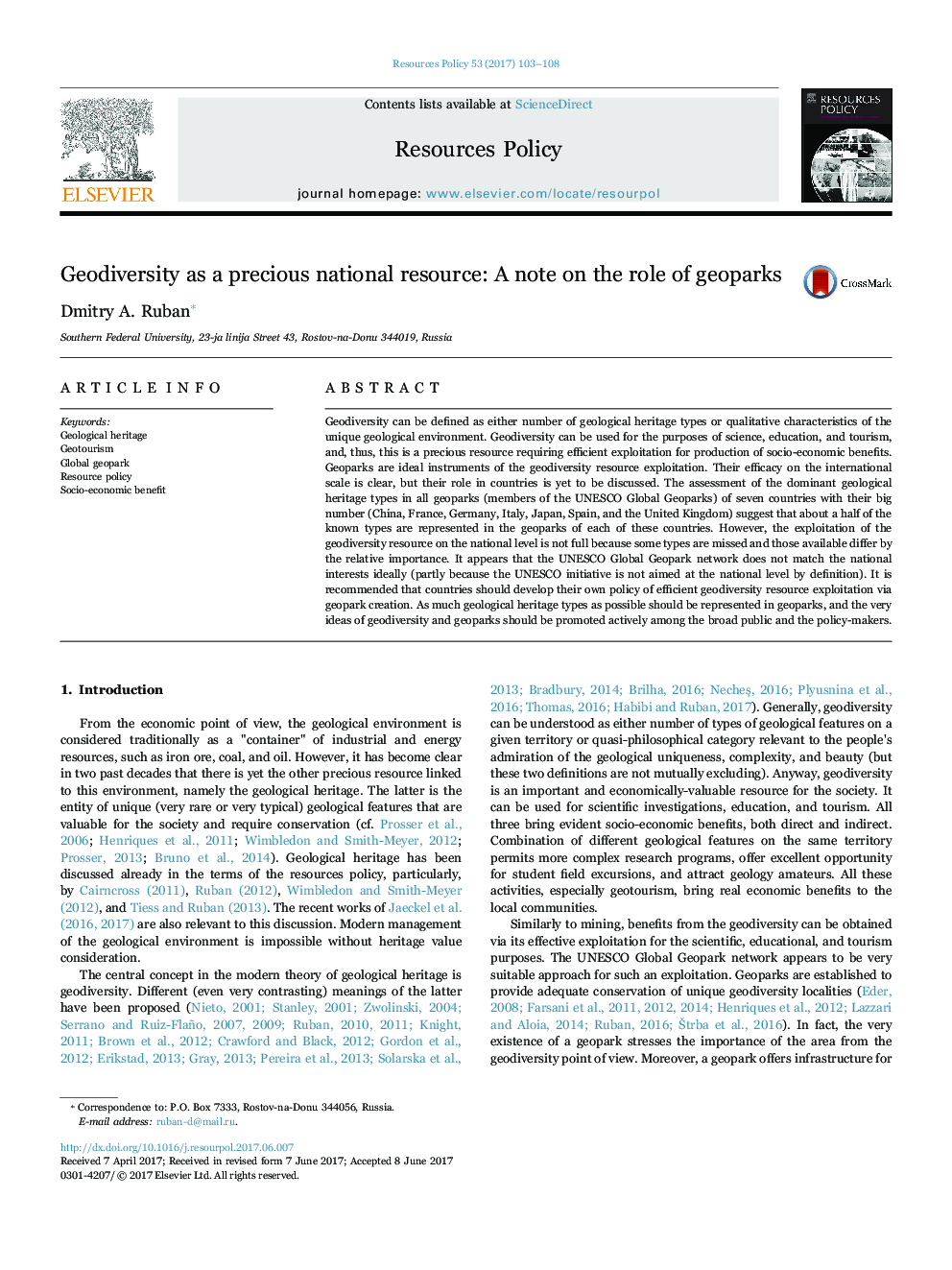| Article ID | Journal | Published Year | Pages | File Type |
|---|---|---|---|---|
| 5104151 | Resources Policy | 2017 | 6 Pages |
Abstract
Geodiversity can be defined as either number of geological heritage types or qualitative characteristics of the unique geological environment. Geodiversity can be used for the purposes of science, education, and tourism, and, thus, this is a precious resource requiring efficient exploitation for production of socio-economic benefits. Geoparks are ideal instruments of the geodiversity resource exploitation. Their efficacy on the international scale is clear, but their role in countries is yet to be discussed. The assessment of the dominant geological heritage types in all geoparks (members of the UNESCO Global Geoparks) of seven countries with their big number (China, France, Germany, Italy, Japan, Spain, and the United Kingdom) suggest that about a half of the known types are represented in the geoparks of each of these countries. However, the exploitation of the geodiversity resource on the national level is not full because some types are missed and those available differ by the relative importance. It appears that the UNESCO Global Geopark network does not match the national interests ideally (partly because the UNESCO initiative is not aimed at the national level by definition). It is recommended that countries should develop their own policy of efficient geodiversity resource exploitation via geopark creation. As much geological heritage types as possible should be represented in geoparks, and the very ideas of geodiversity and geoparks should be promoted actively among the broad public and the policy-makers.
Related Topics
Physical Sciences and Engineering
Earth and Planetary Sciences
Economic Geology
Authors
Dmitry A. Ruban,
